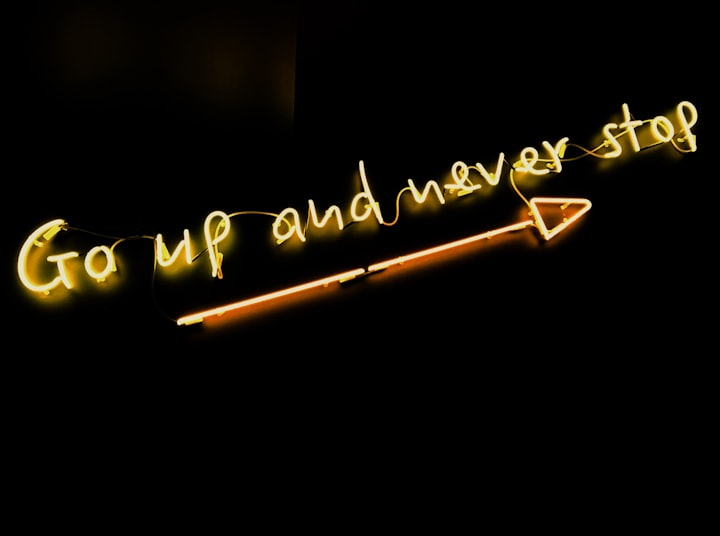Top 5 Faves About Using the Stash App to Invest in the Stock Market in 2021 (Part I)
The Serenity Project: Just a White-Trash Kid Winning the Wealth-Building Game

If you have a smartphone and a way to make a deposit, you can start investing in the stock market. You can begin with just a few bucks—as much or as little as you've got to spare—or by simply leveraging your regular spending habits. And that's really, really empowering.
Of course, if you're anything like me, you tune out when you hear a message like that. You roll your eyes and automatically assume it'll be too complicated or too expensive or it's a scam or life's too stacked against you to bother trying. That's what I thought, too. Why would I want to play some old rich guy game when I'm just a small-town girl living paycheck to paycheck, struggling to get by?
Well… that's a great question to look into. I wish I would've taken it seriously a long time ago.
The following is based on personal opinions and personal experiences, and should not, under any circumstances, be considered professional investment advice. Always do your own research before making financial decisions. Please note no views or opinions of the author are endorsed by any other party mentioned herein. (I doubt they even know I exist.)
At the beginning of the year, out of the blue (or thanks be to God), the Stash app grabbed my attention. That was really peculiar, since I've never had the slightest interest in learning about the stock market. My family's hillbilly upbringing produced in me a self-defeating sort of reverse pride that declared whole-hearted, foul-mouthed disdain for the world of wealth and finance, bitterly convinced the rich are out to rob from the poor and no matter what, a normal person can't ever catch a break.
But… "Stash was built with a simple philosophy: everyone should have access to investing."
Everyone should have access.
Something about that simple philosophy struck a chord in my spirit that's been ringing ever since. And I'm not talking about the anti-establishment kind of "sticking it to the man" that recently took place in the Reddit vs. Wall Street saga over GameStop stock, which saw millions of social media crusaders deliberately out to assassinate the profits of seasoned traders. Even people who couldn’t care less about stock market news were watching that hot mess play out last week.
No, I'm hearing the call of a far subtler revolution… one not dependent on robbing from anyone, rich or poor, but on empowering more people… building and sharing better investment education for the average joe (like me)... equipping the non-elite to open up a wealth-building win-win all around, for all of us to benefit, together.
I heard about Stash on January 1st. Within the first couple weeks of 2021, I'd become a beginner investor already seeing world-changing potential. And that turned into The Serenity Project—an experiment in winning the wealth-building game.
Imagine bottom-rung earners learning to utilize long-term investing to leverage our spending, saving, and earning, effectively using the stock market to start correcting the inequity around the stock market. In other words, imagine how capitalist principles can actually help to resolve current issues of capitalist society. Sounds crazy, I know… and that's what I like about it.
Before we go any further, I know the burning question on your mind: How much does it cost?
So here you go. Stash offers three plans: 1) Beginner for $1/month, 2) Growth for $3/month, or 3) Stash+ for $9/month.
You can go read about the different plan features for yourself; for my purposes right now, the Beginner plan is all I need for the foreseeable future. I mean, I'm reasonably confident I can manage to spare a buck a month for basically unlimited wealth-building potential, okay?
That said, it's worth being aware that some reviewers do consider a $1/month fee to be rather high for an investing app. But setting up the free Stash banking option changes that assessment… which I'll explain in a minute.
So here we go. Now that I've been experimenting with the Stash app for a little over a month, here are my top five favorite aspects about using this app to begin investing in the stock market in 2021.
#1. Earning stock rewards by making normal debit card purchases.
Although this feature is one I've personally used the least so far, it's the one I'm most wildly optimistic about, as far as "greater access for more people to discover investing capabilities" goes.
In a nut shell, as I mentioned, the Stash app includes a free banking option. Why does this matter so much? Well, Stash banking lets you connect your investing activity to a Stock-Back® Card, otherwise called a Stash Visa Debit Card. Your Stash banking can be funded by 1) transferring in money from an existing checking account, or 2) setting up a direct deposit for all or part of your income to go into your Stash account.
Either way, when you use the Stash debit card to make purchases—like the normal, everyday purchases you're making anyway—you earn “stock rewards.” What does this mean? It means that instead of the points or cash back offered by some other cards, each of your Stash debit card purchases earns you a fractional share in companies you're buying from anyway… a fractional share that grows in value when the company's stock grows in value.
For example: last Saturday morning, when I bought a couple of McDonald's breakfast sandwiches on my drive home, I also earned a few cents' worth of McDonald's stock at the same time.
A few cents might not seem like much, but think about how much money you spend in a year. Pretty much all of it, right?! Now imagine a percentage of your annual spending that adds up, year after year, and has the potential to multiply exponentially over time, based on the growth of companies sustained by the purchases of people like you and me, who buy there regularly and contribute to the growth of said companies.
In the long haul, considering the normal spending habits of everyday Americans, it's a game changer. After all, even broke people still buy gas, groceries, and other necessities in the normal course of life… often from large companies that perform well in their market sectors, year after year.
In other words, by sparing just $1/month, you can use the Stash debit card to start taking ownership with every purchase you make, investing in companies you're buying from anyway. Even if you never put another dollar directly into buying stock, your hard-earned money can go to work for you, gradually earning fractional shares that can add up and grow over time.
This is a case of "every little bit counts," in a big way. It's the unique way Stash creates access for almost anyone with a smartphone and a way to make a deposit to begin investing at any income level and any stage of life. From what I’ve seen so far, this is what sets Stash apart from other investing apps—and reviewers who know a whole lot more about personal finance than I do agree. Do some Googling and read for yourself.
Although for accounts with small balances, the $1/month Stash subscription fee is comparatively expensive (since it’ll take some time for your fractional shares to add up to more than that, if the Stash card is your only strategy for investing), this feature opens doors to beginners who might not think they can afford to buy stock at all. In the long run, that could be a really, really big deal. And that’s why, even though I’ve hardly scratched the surface myself so far, this is my #1 favorite aspect of the Stash app.
Next time, I’ll share the rest of my top five faves about investing with the Stash app, plus a bonus that's just plain fun. So stay tuned for Part II.
In the year ahead, I plan to continue writing about my experiences as a beginner investor, using the Stash app to build a portfolio in the stock market. I’m not saying you should do it, too—I’m just gonna try it myself and let you know what happens. I’m learning as I go, so if you’d like to come along for the ride, we’ll be learning together, hopefully doing our small part to turn the tables and win the wealth-building game, for the good of greater society.
Does that sound overly ambitious to you? Maybe we just haven't allowed ourselves to think big enough before.
If you like anything you read here, please share this article with your social media networks to get more people thinking about how we can all start winning the wealth-building game. Like to connect? Drop me a line: jeanmillersays {at} gmail.com.
About the Creator
Jean Miller
Home of The Serenity Project: #whitetrash kid winning the #wealthbuilding game. | Uneducated Galilean | Micah 6:8 | Sober 10+ | #hopewriters






Comments
There are no comments for this story
Be the first to respond and start the conversation.